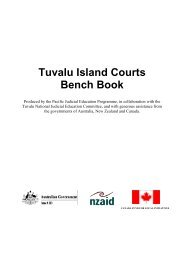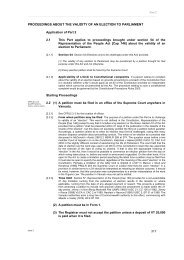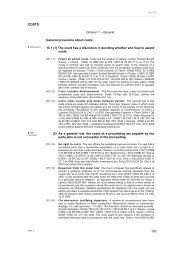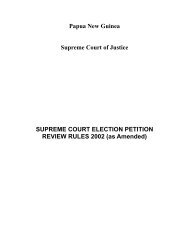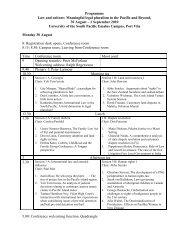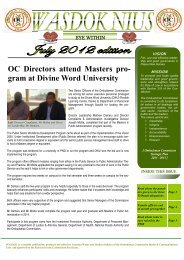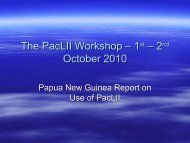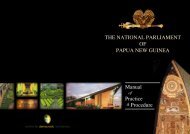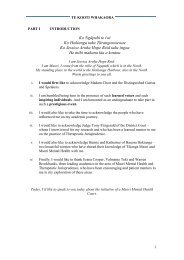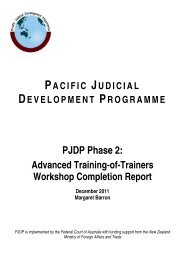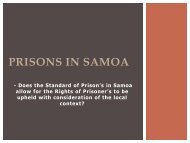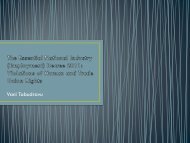Fiji Magistrates Bench Book - Federal Court of Australia
Fiji Magistrates Bench Book - Federal Court of Australia
Fiji Magistrates Bench Book - Federal Court of Australia
You also want an ePaper? Increase the reach of your titles
YUMPU automatically turns print PDFs into web optimized ePapers that Google loves.
2.2 Classification by Content<br />
Classification by content refers to the way the evidence is relevant to the facts in issue. This<br />
method <strong>of</strong> classification divides evidence into three categories.<br />
1. Direct evidence:<br />
• is evidence which, if believed, directly establishes a fact in issue. For example, direct<br />
evidence would be given by a witness who claimed to have personal knowledge <strong>of</strong> the<br />
facts in issue.<br />
2. Circumstantial evidence:<br />
• is evidence from which the existence or non-existence <strong>of</strong> facts in issue may be inferred;<br />
• is circumstantial because, even if the evidence is believed, the information or<br />
circumstances may be too weak to establish the facts in issue or to uphold a reasonable<br />
conviction; and<br />
• <strong>of</strong>ten works cumulatively and there may be a set <strong>of</strong> circumstances which, individually,<br />
would not be enough to establish the facts in issue but taken as a whole would be enough<br />
to do so.<br />
3. Corroborating or collateral evidence:<br />
• is evidence which does not bear upon the facts in issue either directly or indirectly but is<br />
relevant for the credibility or admissibility <strong>of</strong> other evidence in the case (either the direct<br />
or circumstantial evidence); and<br />
• should come from another independent source, e.g., an analyst or medical report.<br />
3 Documentary Evidence<br />
This is information that is contained in written documents. These documents may include:<br />
• public documents (statutes, parliamentary material, judicial documents, public registers);<br />
• private documents (business records, agreements, deeds, see s4 Evidence Act);<br />
• plans and reports (see s191 CPC);<br />
• certificates;<br />
• statements in documents produced by computers (note that certain rules may apply to this<br />
form <strong>of</strong> documentary evidence);<br />
• tape recordings; and<br />
• photographs.<br />
<strong>Fiji</strong> <strong>Magistrates</strong> <strong>Bench</strong> <strong>Book</strong> April 2004



